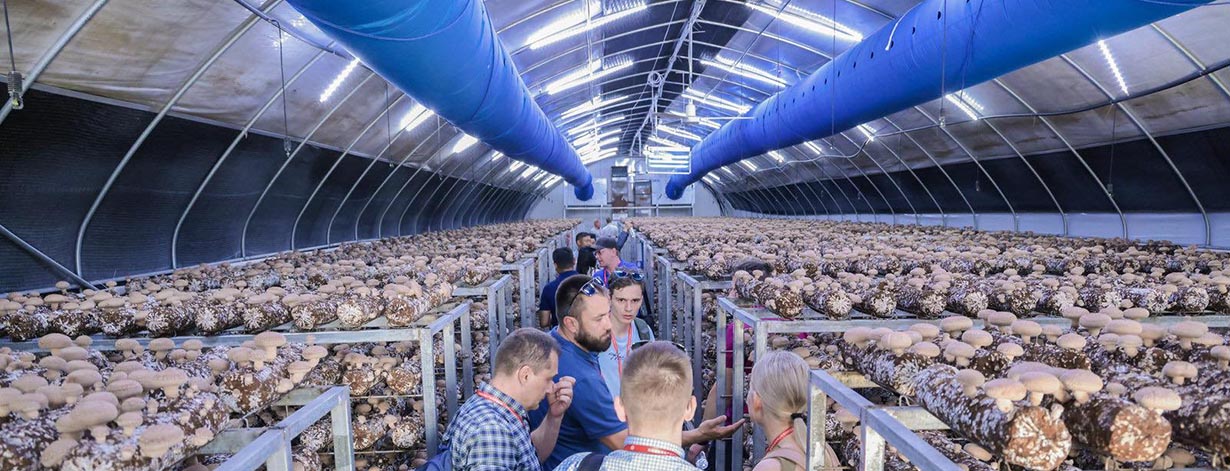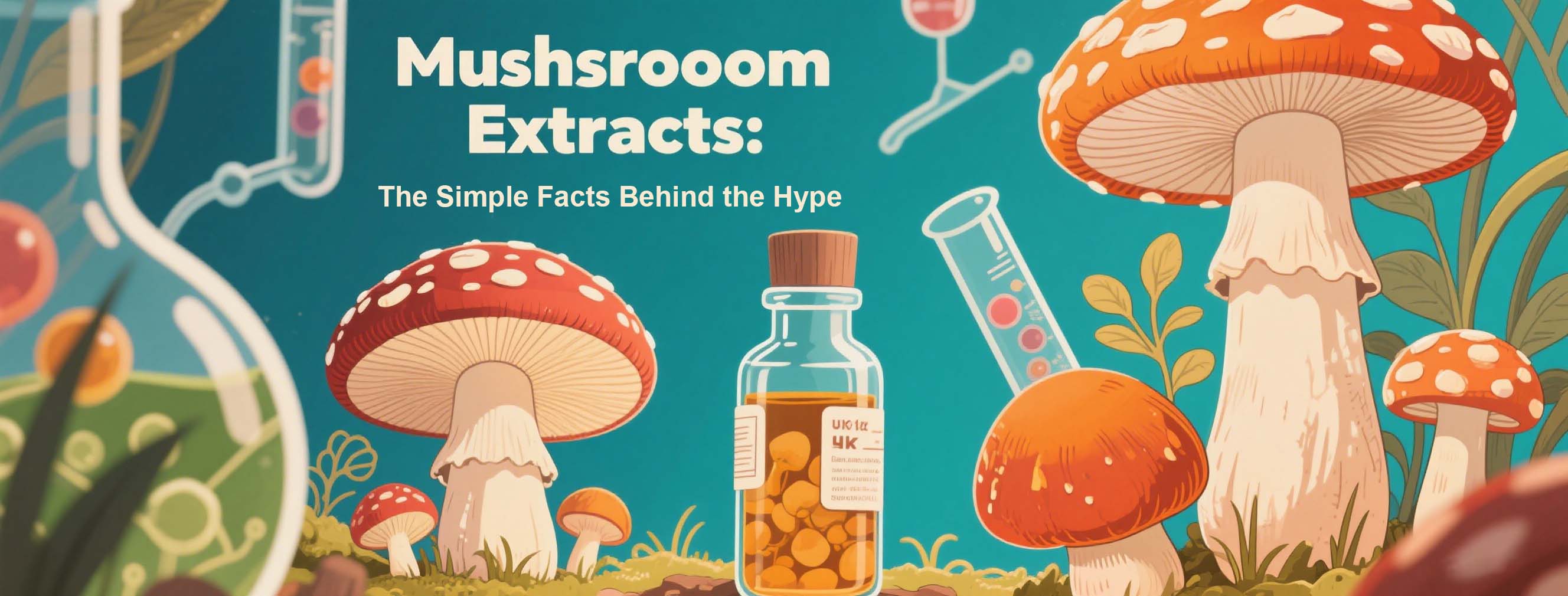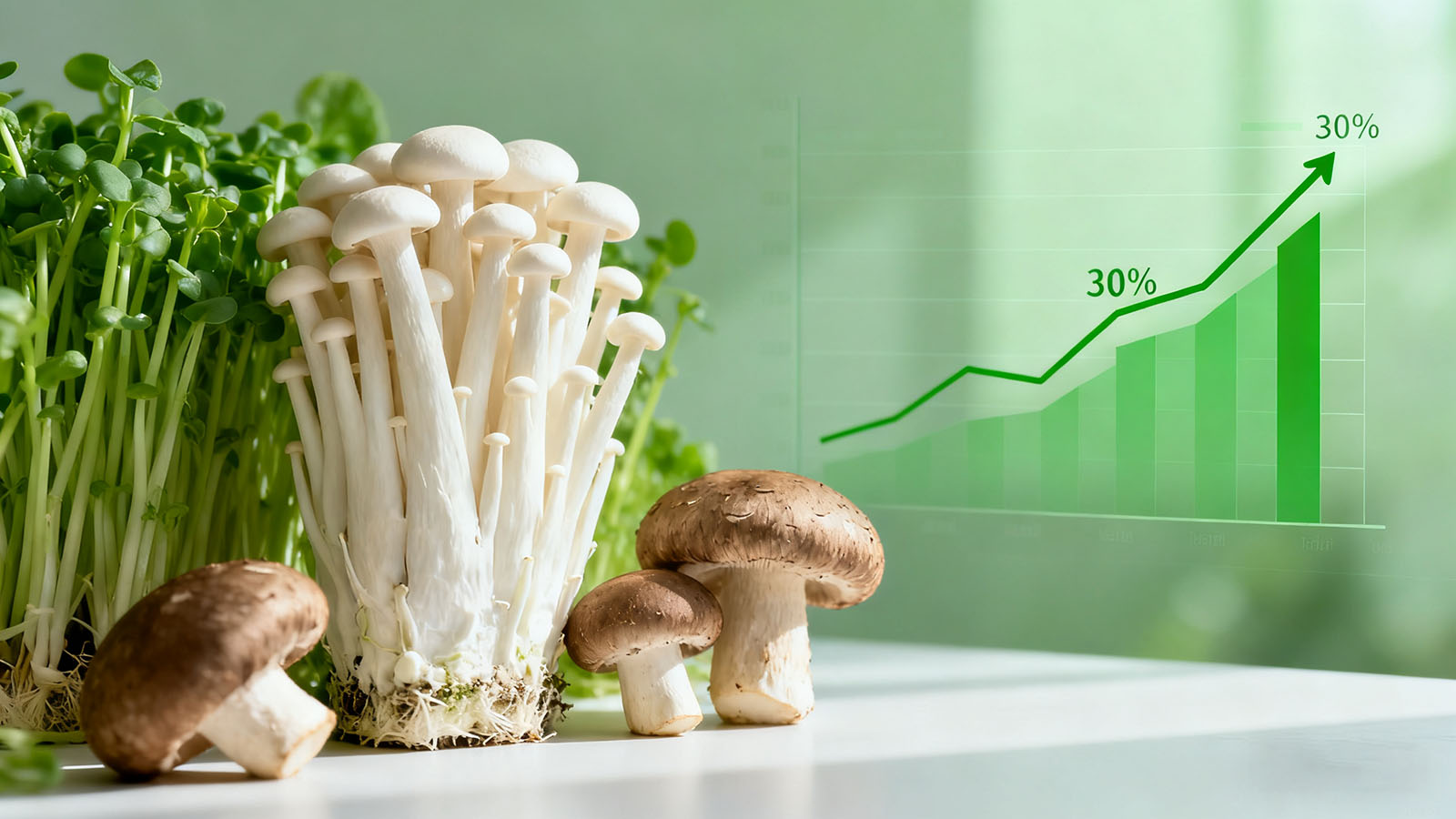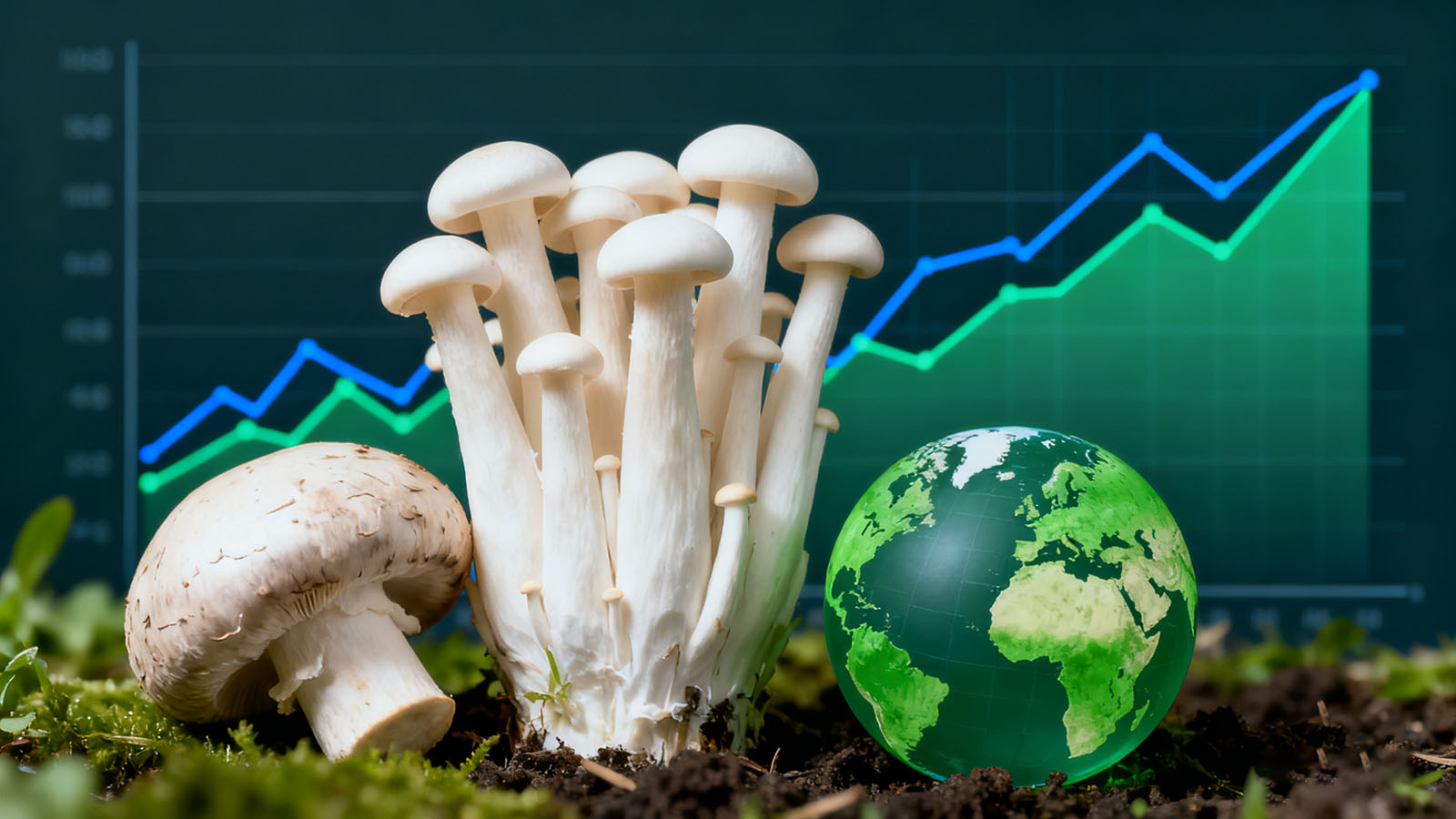
Mushroom Powder Production Process and Core Equipment
Global Market Trends: Demand Patterns Across Six Continents
Innovation in Sales Models
Future Challenges
Chapter 1 Mushroom Cultivation: Technology and Sustainability
1.1 Types of Mushrooms and Cultivation Choices
The raw materials for mushroom powder mainly come from the following high-value mushrooms:
Functional mushrooms:Ganoderma lucidum (Reishi)Cordyceps sinensis (Caterpillar fungus)Hericium erinaceus (Lion's Mane) (for nerve support and immune enhancement)Edible mushrooms:Lentinula edodes (Shiitake)Pleurotus ostreatus (Oyster mushroom)Maitake (Grifola frondosa) (for flavor enhancement and nutritional supplementation)Emerging varieties:Lion's Mane (Hericium erinaceus) (for cognitive function)Chaga (Inonotus obliquus) (for antioxidant properties)Comparison of Cultivation Techniques|
Cultivation Method |
Advantages |
Limitations |
|
Log cultivation |
Rich flavor, suitable for Reishi |
Long cycle (6-24 months) |
|
Bag cultivation |
High yield and quick growth (3-6 months) |
Requires strict temperature and humidity control |
|
Vertical farming |
High space efficiency, year-round production |
High initial investment cost |
Chapter 2 Mushroom Powder Production Process and Core Equipment
2.1 Overview of the Production Process
Raw material processing → Drying → Grinding → Sterilization → Packaging
Preprocessing: Washing to remove impurities, slicing to 3-5mm thickness (to improve drying efficiency)Drying technology:Freeze-drying (-50℃ vacuum): Retains over 90% of active ingredients (such as β-glucans), with a cost of about $12/kg.Hot air drying (60-80℃): Costs only $3/kg, but loses 30% of heat-sensitive nutrients.Ultrafine grinding: Using a jet mill (particle size ≤20μm) to improve bioavailability.Sterilization and packaging: Irradiation sterilization (Cobalt-60) ensures microbial safety, and nitrogen-filled aluminum foil bags extend shelf life.2.2 List of Core Equipment and Costs
|
Equipment |
Function |
Representative Brand |
Investment Cost |
|
Tunnel dryer |
Batch hot air drying |
Bühler (Switzerland) |
$500,000−$2,000,000 |
|
Vacuum freeze-dryer |
Retain active ingredients |
GEA (Germany) |
$2,000,000−$5,000,000 |
|
Jet mill |
Ultrafine grinding to cell disruption |
Hosokawa (Japan) |
$300,000−$800,000 |
|
X-ray detector |
Foreign matter and microbial screening |
Thermo Fisher |
$100,000−$250,000 |
Chapter 3 Global Market Trends: Demand Patterns Across Six Continents
3.1 North AmericaFunctional Foods Drive High-End MarketMarket size: Reached $820 million in 2023 (35% of the global market), with a CAGR of 11.3%.Consumption scenarios:Reishi powder → Immune supplements (e.g., added to Four Sigmatic coffee).Lion's Mane powder → Brain health products (e.g., Real Mushrooms capsules).Policy benefits: The US DSHEA Act allows functional claims, driving innovation.
3.2 EuropeOrganic Certification and the Integration of Medicine and FoodGrowth poles: Germany and France lead, with a market size of $350 million in 2023.Certification barrier: EU ECOCERT organic certification increases costs by 15%, but offers a premium capacity of 30%.Channel transformation: Pharmacy channels account for 40% (e.g., Ladrôme Reishi powder in France enters pharmacies).
3.3 AsiaIntegration of Traditional Medicine and Modern TechnologyChina: Shiitake powder as a soup ingredient (annual demand of 12,000 tons), CAGR 8%.Japan: Government subsidizes functional mushroom research and development (e.g., Amino Up's β-glucan extraction technology).India: Ayurvedic medicine promotes Reishi powder exports, with a 25% increase in exports to Europe and the US in 2023.
3.4 Other RegionsAfrica: South Africa and Kenya launch oyster mushroom powder poverty alleviation projects (low-cost protein source).South America: Brazil's mushroom powder enters the Middle East market through Halal certification.Oceania: Australia tightens regulations, requiring TGA certification to restrict SMEs from entering the market.
Chapter 4 Innovation in Sales Models
4.1 B2B: Vertical Integration of Raw Material Supply
Case: US company Om Mushroom supplies Reishi powder to meal replacement brand Huel at a contract price of $45/kg.Pain points: Long payment terms (90-120 days), need to conduct customized testing for customers (e.g., heavy metals, pesticide residues).
4.2 B2C: Content Marketing of DTC BrandsStrategy:Educational marketing: Canada's FreshCap popularizes mushroom knowledge through blogs and podcasts, increasing conversion rates by 70%.Subscription: Shroom Tea delivers mixed mushroom powder monthly, with a repurchase rate of 52%.
4.3 Emerging Model:Web3 Technology application: Netherlands' Mushroom Chain uses NFTs to record cultivation data, achieving a 20% premium.Community operation: Discord community "Fungi Future" gathers 30,000 enthusiasts, crowdfunding for new product development.
Chapter 5 Future Challenges
5.1 Technical Bottlenecks
Standardization of active ingredients: The content of triterpenes in different batches of Reishi powder fluctuates by ±15%, requiring AI-driven process optimization.Supply chain resilience: In 2022, the delivery cycle of dryers in North America was extended to 18 months, affecting capacity expansion.
5.2 Regulations and Consumer Awareness
EU Novel Food: Hericium erinaceus powder requires an investment of €250,000 to apply for market access, blocking SMEs."Mushroom = hallucinogenic" misconception: 34% of US consumers mistakenly associate functional mushrooms with hallucinogenic mushrooms, requiring large-scale public education.
5.3 Sustainability Pressure
Water consumption: Producing 1 kg of mushroom powder requires 2.5 tons of water (data from Wageningen University in the Netherlands).Packaging revolution: UK's Mushroom Packaging develops mycelium-based biodegradable bags, which are 40% more expensive than plastic.
The Golden Decade of the Mushroom Powder Industry: From the biological revolution in cultivation technology to the consumer wave of functional foods, the mushroom powder industry stands at the intersection of a healthy economy and sustainable development. Companies that can break through in the three areas of standardized production, consumer education, and green supply chains will have the potential to take the lead in this "mycological economy."




创新博览会LOGO-white.png)


创新博览会LOGO.png)


